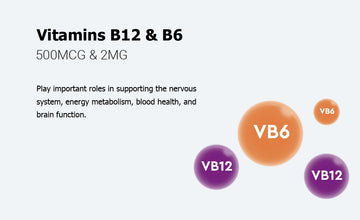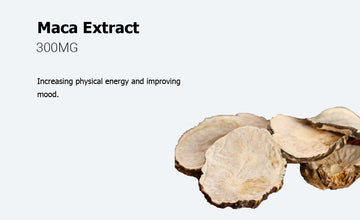If you've ever looked at the back of a cereal box or multivitamin pack, you've seen all the vitamin letters - A, C, E, K, and so on. While every other vitamin appears only once, vitamin B shows up several times. This is because the B vitamin group is actually comprised of eight distinct water-soluble vitamins - B1, B2, B3, B5, B6, B7, B9, and B12.
Though classified together as the "B-complex," these vitamins each have unique functions and roles within the body. Today, we'll dive deeper into two of the most well-known B vitamins - B6 and B12 - to understand the key differences between them.
Vitamin B6 vs. Vitamin B12
Both vitamin B6 and B12 play important parts in red blood cell production and supporting the immune system. Specifically, they help maintain healthy immune function by facilitating the body's response against foreign antigens.
However, the two vitamins also have distinct responsibilities:
Vitamin B6 (Pyridoxine)
- Involved in over 100 enzymatic reactions, especially those related to protein metabolism
- Important for regulating hormones, red blood cell formation, and nervous system health
- Found in a wide variety of animal and plant foods like poultry, fish, potatoes, and bananas
- Recommended daily intake for adults is 1.3-1.7 mg
Vitamin B12 (Cobalamin)
- Essential for red blood cell formation and DNA synthesis
- Plays a critical role in neurological function and energy metabolism
- Primarily obtained from animal sources like meat, fish, eggs, and dairy
- Recommended daily intake for adults is 2.4 mcg
- Deficiency is more common, especially in vegetarians/vegans and older adults
The key difference is that while B6 has a broad involvement in metabolic processes, B12 is more specifically vital for red blood cell production and proper nervous system functioning. Deficiencies in each can lead to different health issues, such as anemia, nerve damage, and cognitive impairment.







